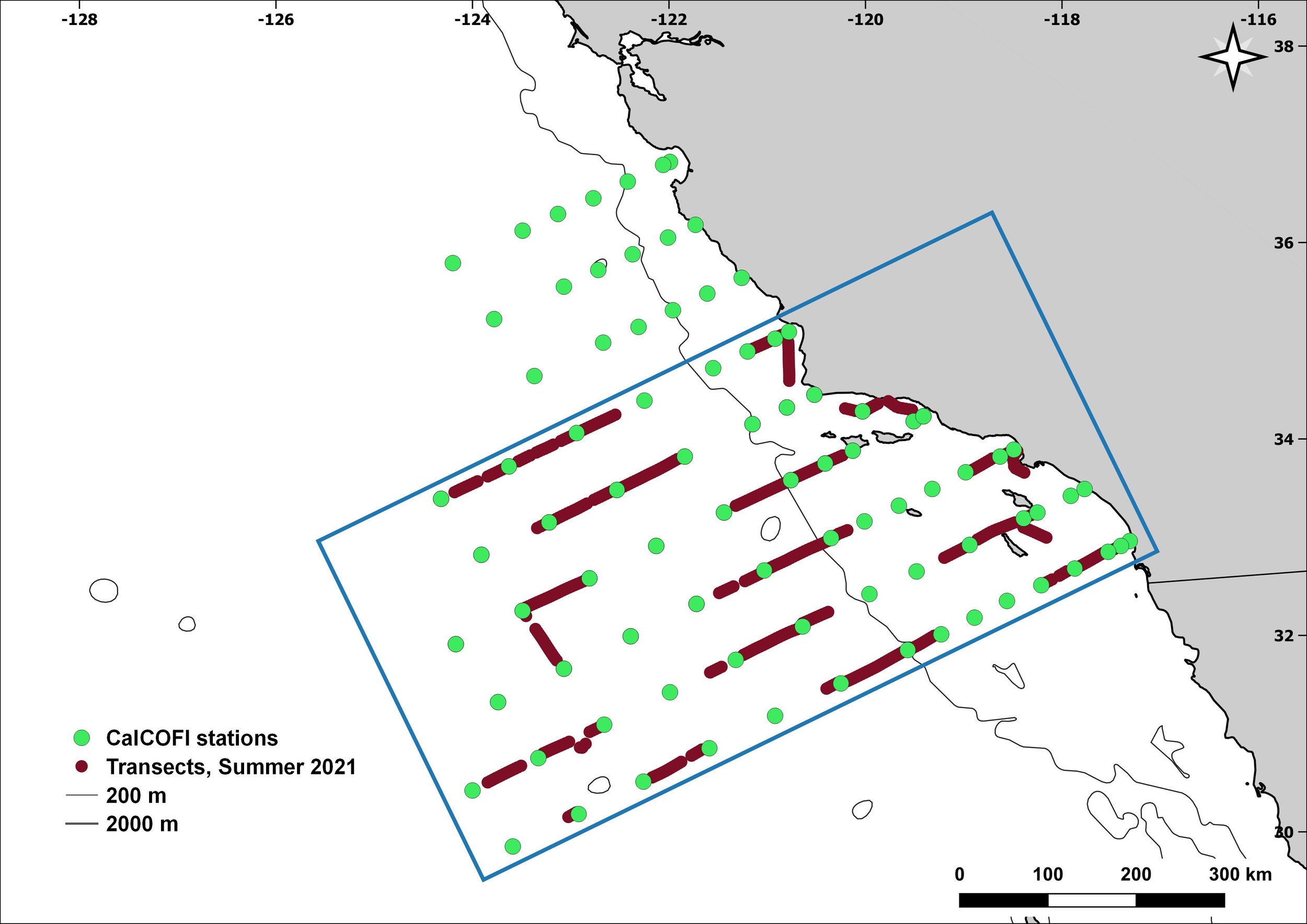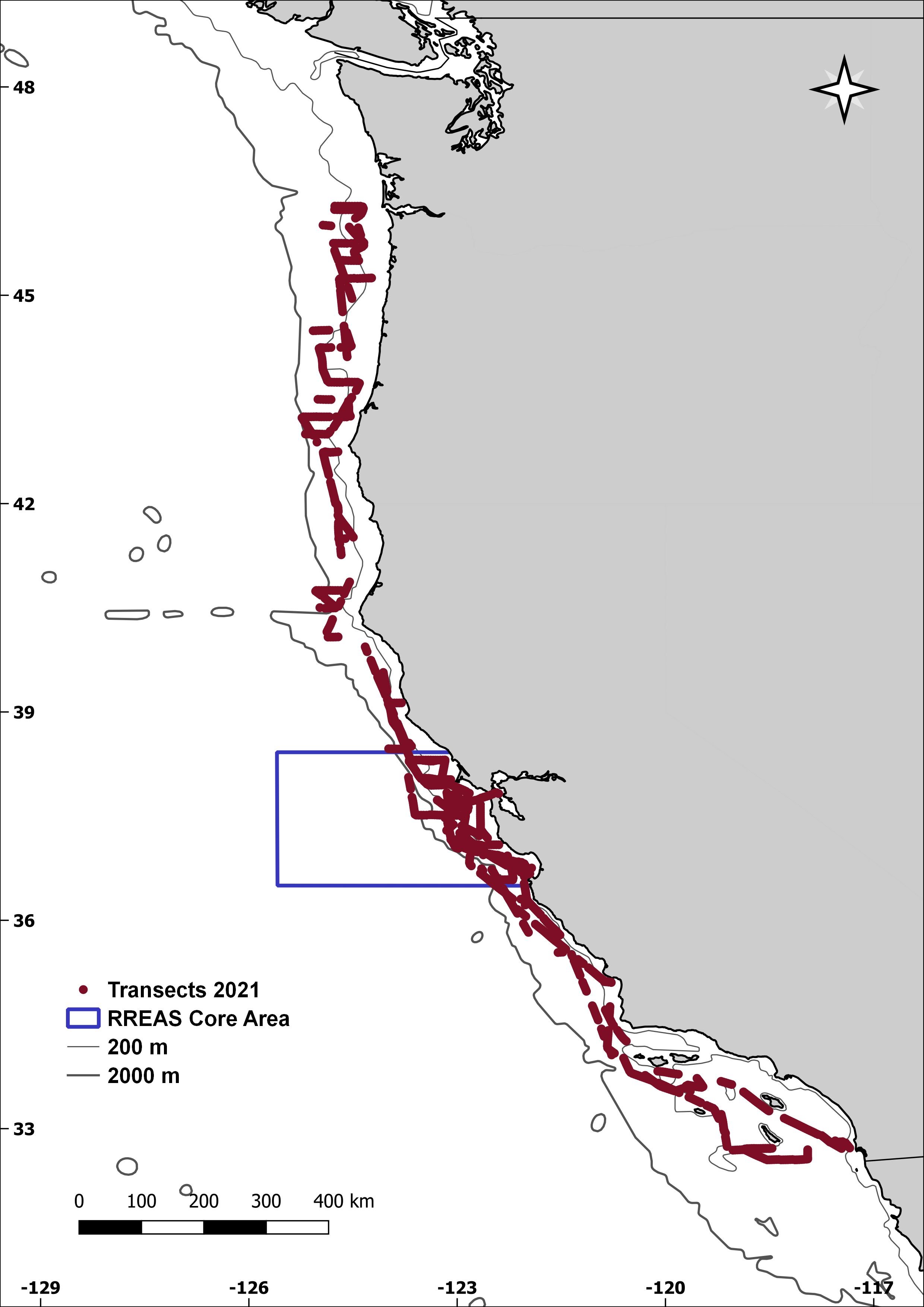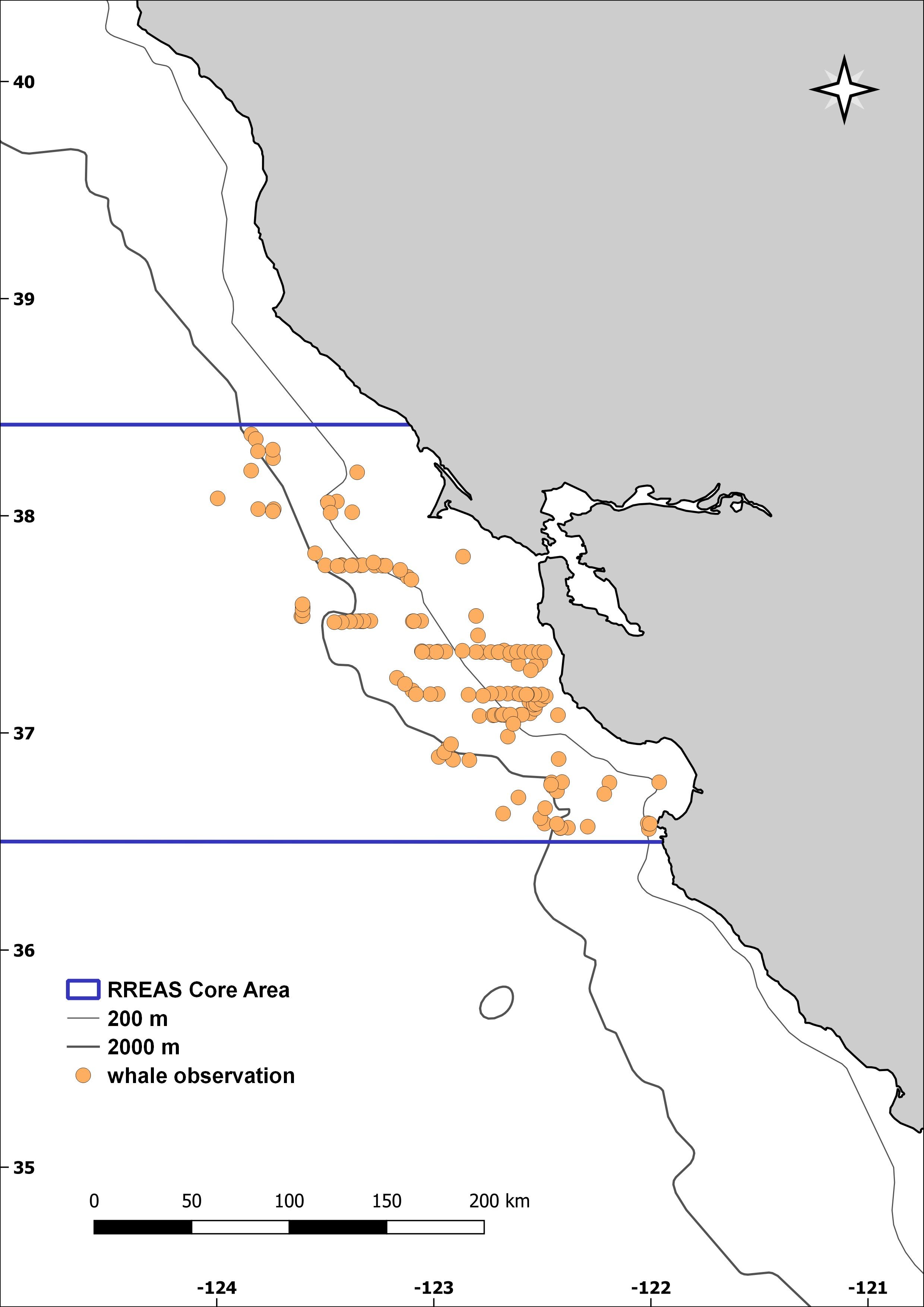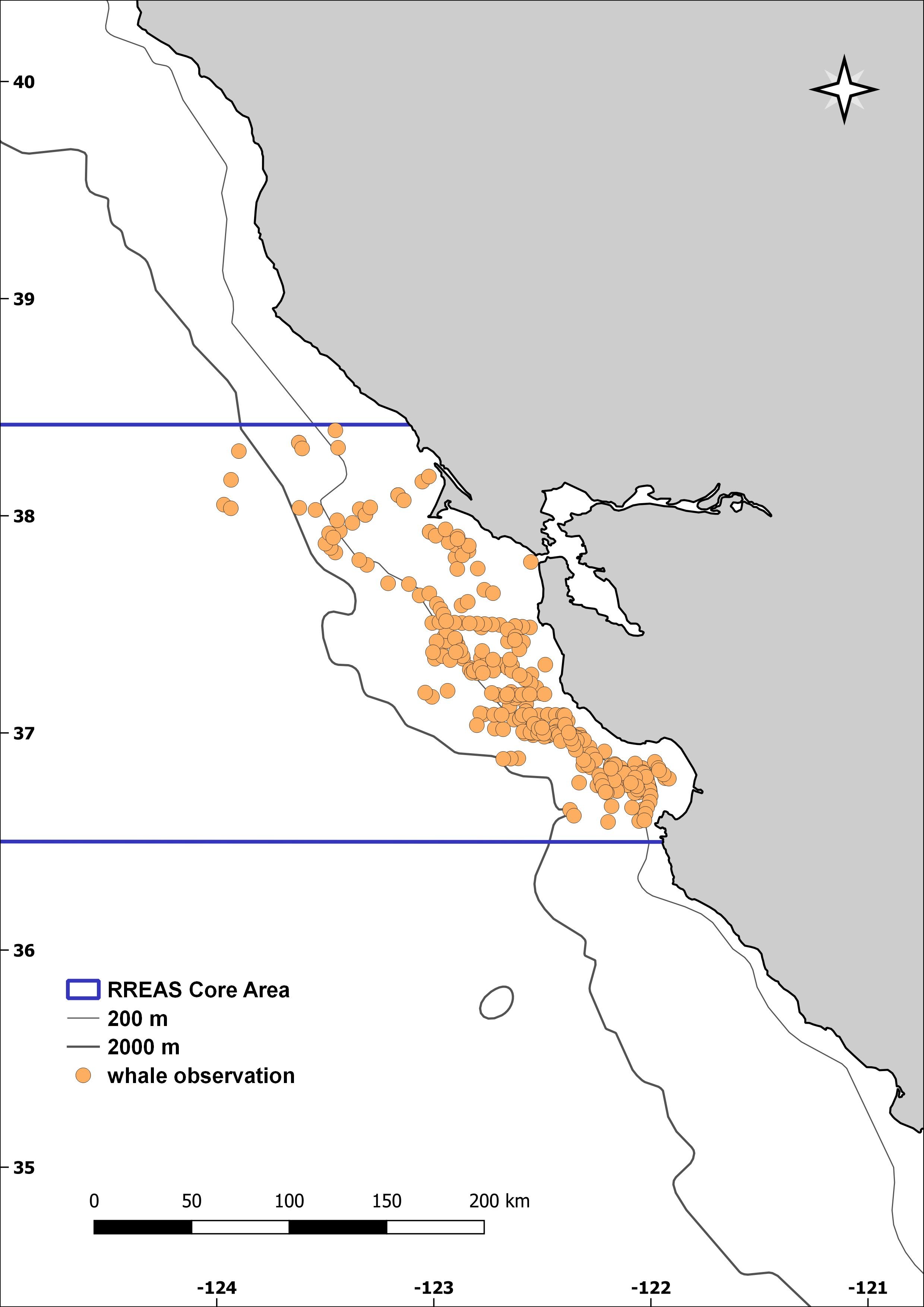Farallon Institute Newsletter - Winter 2021
Delta smelt.
Around The [Home] Office
Despite the continuing hardships of the pandemic, Farallon Institute scientists had a productive year in 2021 with over a dozen papers published in peer-reviewed journals, including Science, Geophysical Research Letters, Frontiers in Marine Science, ICES Journal of Marine Science, Fish and Fisheries, and Fisheries Research, among others. We continued to collect new data on three at-sea surveys (see below) and Alcatraz Island after missing much of the data collection in 2020. Perhaps most rewarding, however, was the cautious return of some in-person office work together, once COVID vaccination was available. We remain well and hope that all of our supporters are well too. Thank you for your support, particularly during this exceptionally challenging period for us all.
State of the Ocean — Central-Northern California
Summer and early fall ocean conditions this year have generally felt more normal than in previous years. We had a cold and productive upwelling last spring, which led to a normal summer. Only early fall temperatures have shown signs of warm conditions and slightly weaker winds. These mostly normal conditions are reflected in the latest update of the MOCI index (Multivariate Ocean Climate Indicator). Why the ‘normality’ after the warming we have experienced for the last several years? These normal conditions are associated with the cooling effect caused by a La Niña event that started in late 2019. La Niña events, although not as dramatic as their counterpart El Niño, tend to keep ocean conditions cool and upwelling strong along the California coast. The most notable recent La Niña events occurred in 2008 and 2010, although the strongest in recent decades was 1999. The 2019-2020 event was not as strong (see figure) but did manage to strengthen the upwelling-favorable winds and cool the coastal waters. This summer and fall we are still under mild La Niña conditions. For more information on El Niño and La Niña, see this NOAA site.
Monitoring seabirds and marine mammals at sea
Farallon Institute places seabird observers on two at-sea survey programs: 1) the CalCOFI (California Cooperative Oceanic Fisheries Investigation) survey is conducted off the Southern California Coast three times/year and 2) the Rockfish Recruitment Ecological Assessment Survey (RREAS) covers continental shelf habitat along California and Oregon each May–June. On these long-running surveys, we have 35 years of data from CalCOFI and 22 years of data from RREAS, which are meaningful time series on the distribution and abundance of predators (seabirds and marine mammals) that may live for multiple decades. Upon the conclusion of each survey, Farallon Institute publishes a summary cruise report online, and then data are made available through an online database each fall.
Farallon Institute’s participation on the CalCOFI survey is funded by the Southern California Coastal Ocean Observing System (SCCOOS) and NSF’s Long-term Ecological Research - California Current Ecosystem (LTER-CCE) program. Funding for work on the RREAS survey is done in collaboration with NOAA/National Marine Fisheries Service, Santa Cruz Laboratory, and is also funded by SCCOOS.
Above figure: Areas surveyed on the (left) summer CalCOFI and (right) RREAS cruises in 2021. The blue box denotes the core survey area for each program, which are more consistently covered between years.
Baleen whale observations in the RREAS core survey area off the central California coast. Left: 327 whales were recorded during 72 survey days in 2001–2005 (~4.5 whales per day). Right: 710 whales were observed in 67 survey days in 2015–2019 (~10.6 whales per day). Whale species included blue (Balaenoptera musculus), fin (B. physalus), humpback (Megaptera noaeangliae), and minke (B. acutorostrata), which are all consumers of krill.
Big eaters have big effects
Baleen whales are the largest animals that have ever lived on Earth, though they eat very small fish and invertebrates, such as krill, that may be only one inch long. To survive, whales must eat great quantities of these small prey, but just how much they eat has been difficult to quantify since they feed in the water column of the ocean. New research techniques and equipment has allowed researchers to better quantify how much whales eat, and they found that whale consumption rates are up to three times higher than previously thought.
Whale consumption of krill is important to ocean ecosystems because the whales effectively recycle trace elements, such as iron, that are rare in the upper sunlit portion of the water column. Iron and other nutrients are used phytoplankton, the base of the marine food web. Krill eat phytoplankton, and by doing so take up those nutrients into their own bodies. When they die, the nutrients descend to the sea floor with decomposition. However, when whales eat krill, these nutrients are then transferred from the whale back into the ocean via their feces, importantly near the surface where phytoplankton can bloom. Nutrients in the surface layer can be used again and again by phytoplankton, while those on the sea floor cannot. In this way, ocean productivity (the transfer of energy from sunlight to biological organisms) is sustained for the marine food web and the whales, with their massive consumption of krill, facilitate the production of food for themselves and for other predators.
Since industrial whaling of the 20th century, krill abundance has dramatically declined, which is counter-intuitive to the concept that krill should have increased when the whales (their predators) were removed. This observation, known as the “krill paradox”, has perplexed biological oceanographers for decades. An explanation for the paradox revealed by this important study is that the removal of the whales decreased productivity in the ecosystem by the decreasing the amount of iron recycling. Thus, there was less phytoplankton and consequently less krill.
Currently, many whale populations around the world are continuing to recover from industrial whaling (though some whaling does continue, intense whaling ended in the 1970s–1980s; see above figure). Given the potential positive ecological impacts of whales on nutrients in upper ocean habitats, increasing whale populations are expected to have significant benefits on marine ecosystem structure and functions.
This study was published by Savoca et al. in the journal Nature in November 2021.
Photo by Ron LeValley.







